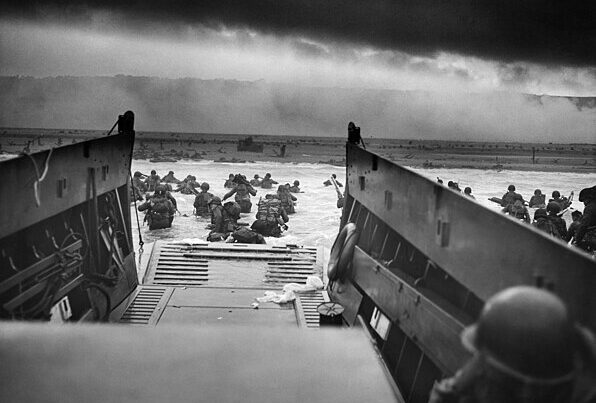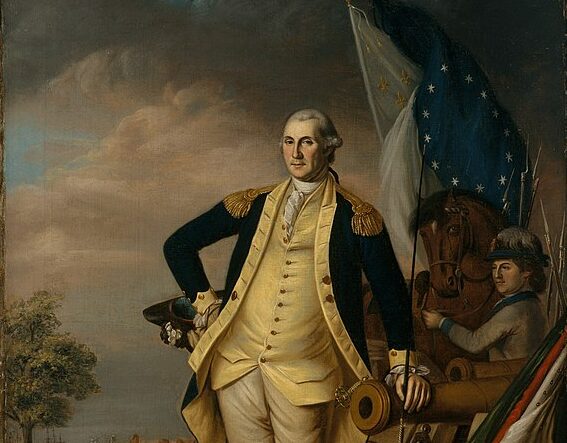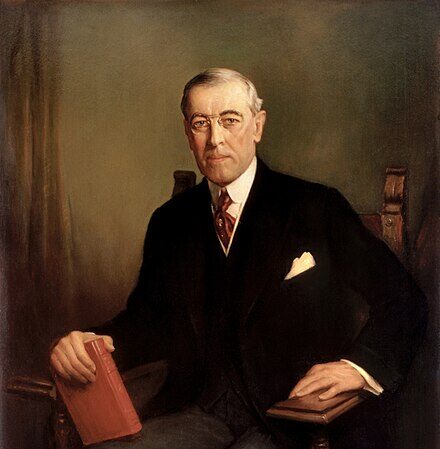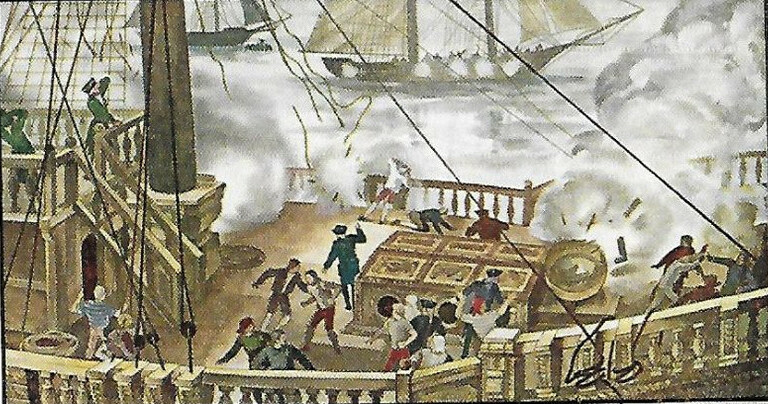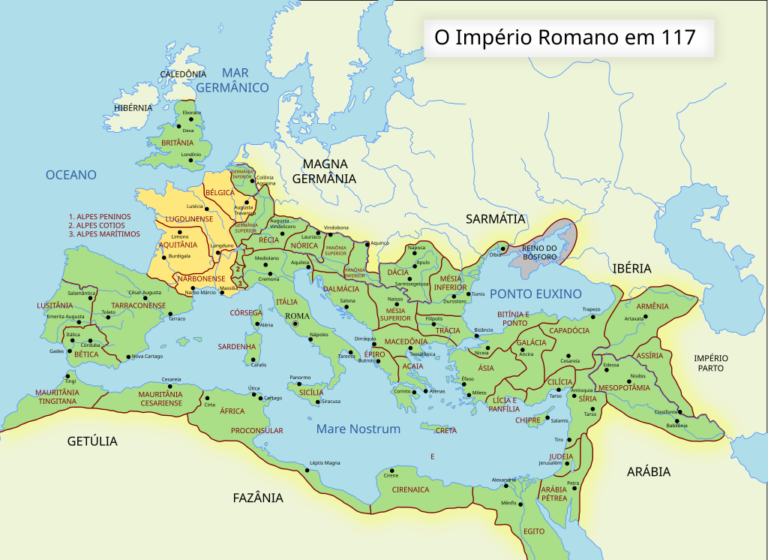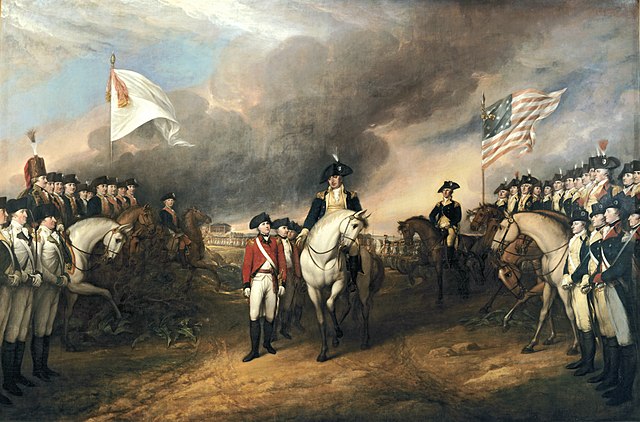
This article examines US wars by death toll, shedding light on the conflicts that have shaped the nation’s identity and global standing. From the fight for independence to overseas battles, these wars have had a profound impact on America’s trajectory. Explore a list of US wars by total fatalities, focusing on the total number of U.S. deaths, including both military and civilian losses.
American Civil War (1861–1865)
- Total U.S. Deaths: ~680,000
- The American Civil War, fought from 1861 to 1865, stands as the deadliest conflict in U.S. history, claiming an estimated 620,000 to 750,000 lives. The war was primarily fought between the Union, representing the northern states, and the Confederacy, which comprised the southern states that seceded from the Union. At the heart of the war were deep disagreements over the institution of slavery, states’ rights, and the preservation of the Union.
- The war’s immense toll can be attributed to several factors. The large-scale battles, often involving tens of thousands of soldiers, resulted in staggering numbers of combat-related fatalities. For example, the Battle of Gettysburg (July 1–3, 1863), one of the bloodiest battles, resulted in over 50,000 casualties over three days of fighting. However, combat deaths were only part of the story. Medical technology during the Civil War was rudimentary, leading to a high mortality rate from infections, disease, and untreated wounds. The lack of antiseptics, antibiotics, and effective surgical techniques meant that many soldiers died from conditions such as gangrene and sepsis following battlefield injuries.
- Disease was perhaps the single most significant cause of death in the Civil War. Malaria, dysentery, and pneumonia ravaged soldiers on both sides, and unsanitary conditions in military camps and hospitals only exacerbated the problem. Poor nutrition, inadequate medical care, and overcrowded conditions in prisons and camps contributed to the high death toll.
2. World War II (1939–1945)
- Total U.S. Deaths: 405,399
- The United States’ involvement in World War II, which spanned from 1941 to 1945, marked one of the most transformative periods in the country’s history. The war began for the U.S. after Japan’s surprise attack on Pearl Harbor, Hawaii, on December 7, 1941. This attack led to the U.S. formally declaring war on Japan and, shortly thereafter, Germany and Italy, which were allied with Japan as part of the Axis Powers.
- The U.S. suffered significant casualties during the war, with over 400,000 Americans losing their lives. The majority of these deaths were due to combat, though there were also deaths resulting from other causes such as bombing raids and illnesses.
- The U.S. participated in key battles such as the invasion of Normandy (D-Day) in 1944, which was a turning point in the war against Nazi Germany. The Battle of the Bulge, the largest and bloodiest battle fought by the U.S. during the war, took place in the winter of 1944-1945 and involved fierce combat in freezing conditions. American soldiers also fought in Italy, France, and Germany, with many soldiers dying in intense fighting, often against well-fortified German positions. The Allied bombing campaigns over Germany also led to heavy casualties, with U.S. airmen being shot down and killed in raids.
3. World War I (1914–1918)
- Total U.S. Deaths: 116,516
- The United States’ entry into World War I in 1917 marked a turning point in the conflict, which had been raging in Europe since 1914. The war was primarily fought between the Allied Powers, including France, the United Kingdom, and Russia, against the Central Powers, led by Germany, Austria-Hungary, and the Ottoman Empire. The war was characterized by trench warfare, where soldiers on both sides fought from entrenched positions across the battlefields of Europe, particularly in France and Belgium.
- The war saw the introduction of deadly new technologies, including poison gas, tanks, and aircraft, but it was perhaps most notorious for the brutal nature of trench warfare. Soldiers lived in unsanitary conditions, enduring constant bombardment and the threat of gas attacks. The trenches were infested with lice, rats, and disease, leading to widespread infections and psychological trauma. American forces, along with their Allied counterparts, faced some of the most brutal conditions, with soldiers fighting in the trenches for extended periods without relief.
- The influenza pandemic of 1918, which spread rapidly around the world during the final year of the war, also claimed a significant number of lives among U.S. soldiers and civilians. The virus, which was particularly virulent, spread through military camps, where soldiers were already living in close quarters under poor conditions.
4. American Revolutionary War (1775–1783)
- Total U.S. Deaths: ~70,000
- The American Revolutionary War, fought between 1775 and 1783, was the struggle of the thirteen American colonies to gain independence from Great Britain. The conflict was fueled by growing discontent with British rule, especially regarding issues like taxation without representation, restrictive trade policies, and the lack of political autonomy.
- The causes of death during the Revolutionary War were multifaceted. Although many soldiers died in combat during the battles such as the Battle of Saratoga in 1777 and the decisive Battle of Yorktown in 1781, a large proportion of fatalities resulted from disease, malnutrition, and the harsh conditions of war. Smallpox outbreaks were particularly devastating. The disease spread quickly through military encampments, where soldiers lived in crowded and unsanitary conditions. The contagion was so widespread that, at one point, General Washington ordered the inoculation of troops in 1777.
- In addition to the soldiers, civilian populations were also severely affected by the war. Many civilians were caught in the crossfire of battles, particularly during British raids on American towns. The British forces employed a strategy of targeting civilian resources to weaken the American war effort, destroying crops, livestock, and homes.
5. Vietnam War (1955–1975)
- Total U.S. Deaths: 58,220
- The Vietnam War, which lasted from 1955 to 1975, was a key conflict during the Cold War era, marked by intense ideological battles between communism and democracy. The war primarily took place in Vietnam but also involved neighboring countries such as Laos and Cambodia. The United States entered the war in support of the South Vietnamese government, which was fighting against the communist forces of North Vietnam, led by Ho Chi Minh.
- The Vietnam War was unique in the sense that it marked the first conflict where the U.S. military faced a determined and well-organized enemy that relied heavily on guerrilla tactics and utilized the dense, tropical landscape to its advantage. The rugged terrain, dense jungles, and swamps made it difficult for U.S. forces to engage the enemy in conventional battles.
- The scale of U.S. casualties in the Vietnam War was immense. Approximately 58,220 Americans lost their lives, with thousands more wounded. Of these deaths, the majority were caused by combat-related injuries, including gunshot wounds, artillery shelling, and land mines.
- The challenges of the environment in Vietnam also contributed significantly to U.S. casualties. The tropical climate and humid conditions led to the spread of diseases such as malaria, dysentery, and hepatitis, which took a heavy toll on American soldiers. Additionally, the U.S. military’s efforts to use chemical defoliants like Agent Orange to clear the jungle and eliminate cover for the enemy resulted in widespread environmental damage, and many soldiers were exposed to toxic chemicals that later caused long-term health issues, including cancer and birth defects.
6. Korean War (1950–1953)
- Total U.S. Deaths: 36,574
- The Korean War, fought from 1950 to 1953, was a critical conflict during the Cold War, showcasing the global struggle between communism and democracy. The war began when North Korea, backed by the Soviet Union and later China, launched a surprise invasion of South Korea on June 25, 1950. This act of aggression prompted the United Nations, led primarily by the United States, to intervene on behalf of South Korea.
- The war took a dramatic turn when China entered the conflict in late 1950, sending hundreds of thousands of troops to support North Korea. The Chinese offensives were massive and relentless, resulting in heavy casualties on both sides.
- The Korean Peninsula’s harsh terrain and climate added to the challenges faced by American and UN forces. Soldiers endured grueling battles in mountainous regions, where the rugged landscape made logistics and troop movements exceedingly difficult. The bitterly cold winters, especially during the fighting near the Chosin Reservoir, were among the most punishing conditions U.S. forces had ever faced. Temperatures often dropped well below freezing, leading to frostbite, hypothermia, and other cold-related injuries.
- Approximately 36,574 American soldiers lost their lives, with over 103,000 wounded. The majority of U.S. fatalities resulted from combat, including gunfire, artillery shelling, and close-quarters fighting. Non-combat deaths, however, were also significant.
7. War of 1812 (1812–1815)
- Total U.S. Deaths: ~15,000
- The War of 1812, fought between the United States and Great Britain from 1812 to 1815, was a multifaceted conflict rooted in disputes over maritime rights, trade restrictions, and territorial expansion. For the United States, the war was also an opportunity to assert its sovereignty and challenge British dominance on the high seas. American leaders believed that a successful campaign might even lead to territorial gains in Canada, which was then a British colony. However, the war proved far more challenging than anticipated, with significant human costs.
- U.S. fatalities during the War of 1812 stemmed from a combination of combat, naval battles, and disease. Approximately 2,260 American soldiers and sailors died in combat or from wounds sustained in battle. These deaths occurred during major engagements such as the Battle of New Orleans, the Battle of Lake Erie, and the defense of Fort McHenry. Naval battles were particularly intense, as both sides sought to control key waterways and disrupt enemy supply lines.
- Diseases like typhoid, dysentery, and pneumonia were a leading cause of non-combat deaths, as they often swept through encampments and naval vessels. Poor sanitation, overcrowding, and the lack of medical knowledge exacerbated the spread of illnesses.
8. Mexican–American War (1846–1848)
- Total U.S. Deaths: 13,283
- The Mexican-American War (1846–1848) was sparked by deep-seated tensions over the annexation of Texas and the United States’ desire for territorial expansion under the doctrine of Manifest Destiny. The U.S. claimed that Texas, which had declared independence from Mexico in 1836, was rightfully its own, while Mexico considered it a rebellious territory. The conflict escalated when disputes arose over the boundary between Texas and Mexico, with the U.S. asserting that the Rio Grande marked the border, while Mexico argued for the Nueces River.
- The war proved costly in terms of human life, with the majority of U.S. deaths resulting from disease rather than direct combat. Tropical diseases such as yellow fever, dysentery, and malaria swept through the ranks of American soldiers, particularly those stationed in Mexico’s hot and humid regions. Poor sanitation, inadequate medical care, and prolonged exposure to harsh environmental conditions exacerbated these outbreaks.
- Combat casualties were also significant, with U.S. forces engaged in fierce battles such as the Siege of Veracruz, the Battle of Buena Vista, and the capture of Mexico City.
9. Iraq War (2003–2011)
- Total U.S. Deaths: 4,492
- The Iraq War (2003–2011), also known as the Second Gulf War, was a complex and controversial conflict initiated by the United States and a coalition of allied nations. The war began with the U.S.-led invasion of Iraq on March 20, 2003, under the pretext that Iraqi dictator Saddam Hussein possessed weapons of mass destruction (WMDs) and posed an imminent threat. Although no WMDs were ultimately found, the war’s scope expanded to include regime change.
- U.S. fatalities during the Iraq War were caused by a variety of factors, reflecting the complex and evolving nature of the conflict. In the early stages, U.S. forces engaged in intense combat during the invasion, including large-scale battles such as the capture of Baghdad. Conventional fighting gave way to prolonged urban warfare as insurgents adopted guerrilla tactics.
- The most significant cause of U.S. casualties was the widespread use of improvised explosive devices (IEDs) by insurgents. These roadside bombs targeted convoys and patrols, causing devastating injuries and fatalities. In addition, U.S. forces frequently found themselves caught in the crossfire of sectarian violence between Sunni and Shia factions, as well as dealing with the rise of extremist groups like al-Qaeda in Iraq.
10. Philippine–American War and Moro Rebellion (1899–1913)
- Total U.S. Deaths: 4,196
- The Philippine-American War and the Moro Rebellion (1899–1913), also known as the Philippine Insurrection, was a conflict between the United States and Filipino revolutionaries seeking independence. The war erupted following the Spanish-American War, in which Spain ceded the Philippines to the United States through the Treaty of Paris in 1898.
- Intense battles occurred during the early stages of the war, such as the Battle of Manila, where U.S. forces faced organized Filipino troops. As the war progressed, Filipino forces adopted guerrilla tactics, ambushing U.S. soldiers, targeting supply lines, and conducting hit-and-run attacks. In addition, malaria, dysentery, and other tropical diseases claimed many lives among U.S. troops, who were unaccustomed to the harsh environmental conditions.
11. Spanish–American War (1898)
- Total U.S. Deaths: 2,446
- The Spanish–American War, fought in 1898, was a brief yet transformative conflict that marked the emergence of the United States as a global power with overseas territories. The war was primarily triggered by Cuba’s struggle for independence from Spanish rule and the United States’ growing interest in extending its influence in the Caribbean and Pacific regions.
- The conflict lasted only four months, from April to August 1898, and unfolded in two main theaters: the Caribbean and the Pacific. In the Caribbean, the U.S. Navy swiftly defeated Spanish fleets, most notably at the Battle of Santiago de Cuba. Theodore Roosevelt and his Rough Riders gained fame for their involvement in battles such as the charge up San Juan Hill. In the Pacific, Commodore George Dewey led the U.S. Navy to a decisive victory over Spanish forces in Manila Bay.
- Despite the war’s brevity, it claimed a significant number of lives, though the majority of U.S. deaths were not due to combat. Disease, including yellow fever, malaria, and typhoid, was the leading cause of fatalities, exacerbated by poor sanitation and the challenging tropical conditions in Cuba and the Philippines. Of the 2,446 American deaths recorded, only 385 resulted from combat, while 2,061 were attributed to disease.
12. War in Afghanistan (2001–2021)
- Total U.S. Deaths: 2,325
- The War in Afghanistan, lasting from 2001 to 2021, was the United States’ longest-running conflict, rooted in the response to the terrorist attacks of September 11, 2001. The war began when the U.S., backed by NATO allies, launched Operation Enduring Freedom to dismantle al-Qaeda and remove the Taliban regime that harbored its leaders, including Osama bin Laden.
- The early years focused on counterterrorism efforts and rebuilding Afghanistan’s government and security forces. Over time, the mission expanded to include counterinsurgency operations as the Taliban regrouped and mounted a resilient insurgency. The war saw U.S. and coalition forces engaging in intense combat, often in rugged terrain, against an elusive enemy employing guerrilla tactics, improvised explosive devices (IEDs), and suicide bombings.
- By the war’s end, the U.S. had lost 2,325 service members, with thousands more wounded in action. The long deployments, harsh terrain, and psychological toll of the war contributed to significant strain on American military personnel.
13. Second Seminole War (1835–1842)
- Total U.S. Deaths: ~1,750
- The Second Seminole War, fought from 1835 to 1842, was one of the longest and most expensive conflicts between the United States and Native American tribes. It arose from the U.S. government’s efforts to enforce the Indian Removal Act of 1830, which aimed to relocate Native American tribes from their ancestral lands in the southeastern United States to designated territory west of the Mississippi River. The Seminoles, a group of Native Americans and escaped African slaves living in Florida, resisted these efforts fiercely.
- The conflict began in December 1835 with the Dade Massacre, where Seminole warriors ambushed and killed over 100 U.S. soldiers, marking a brutal start to the war.
- U.S. fatalities during the war resulted from both combat and the harsh conditions of the Florida wilderness. Diseases such as malaria, dysentery, and yellow fever claimed many lives, exacerbating the toll on American troops. The war dragged on for years, with intermittent periods of negotiation and renewed fighting.
14. Northwest Indian War (1785–1796)
- Total U.S. Deaths: ~1,100
- The Northwest Indian War, fought between 1785 and 1796, was a pivotal conflict in the early history of the United States as it sought to expand its territory westward. This war, also known as the Ohio War or Little Turtle’s War, was primarily fought between the United States and a confederation of Native American tribes, with support from British forces still stationed in the region.
- The roots of the war lay in disputes over land and sovereignty following the American Revolution. Although the Treaty of Paris (1783) granted the United States territory in the Northwest, Native American tribes, including the Shawnee, Miami, and Delaware, had not consented to these terms. These tribes, under leaders like Little Turtle of the Miami, Blue Jacket of the Shawnee, and Buckongahelas of the Delaware, resisted U.S. settlement in the area, seeing it as a threat to their lands and way of life.
15. American Indian Wars (1865–1898)
- Total U.S. Deaths: ~950
- The American Indian Wars (1865–1898) represent a series of conflicts between Native American tribes and the United States government, primarily during the period of westward expansion. These wars were the result of increasing U.S. settler encroachment on Native American lands, as well as the federal government’s efforts to force tribes onto reservations and assimilate them into American society.
- The casualties of the American Indian Wars were significant on both sides. Many deaths occurred as a result of battle, while others were caused by diseases, starvation, and the harsh conditions of forced relocation.
16. Creek War (1813–1814)
- Total U.S. Deaths: ~575
- The Creek War (1813–1814) was a conflict between the United States and the Creek Nation, a group of Native American tribes located in the southeastern United States. This war, which took place during the War of 1812, was primarily fought in what is now Alabama and Georgia. It was a result of tensions between the Creek Nation and the expanding American frontier, as well as internal divisions among the Creek people, who were divided between those who wanted to assimilate into European-American culture and those who sought to resist encroachment on their lands.
- The death toll from the Creek War was significant, with estimates of approximately 575 U.S. deaths and an unknown number of Creek fatalities. Many of the deaths among both U.S. forces and Native Americans were due to disease, as well as the harsh conditions of warfare.
17. Quasi-War (1798–1800)
- Total U.S. Deaths: 514
- An undeclared naval conflict between the United States and the French First Republic, fought mainly in the Caribbean and along the U.S. East Coast. It stemmed from U.S. actions, including suspending repayment of French loans from the Revolutionary War and signing the Jay Treaty with Britain in 1794. France, viewing these as betrayals, began seizing American ships trading with Britain. Diplomacy failed, especially after the XYZ Affair, and by 1798, over 316 American ships had been captured.
- In response, Congress reconstituted the U.S. Navy and authorized force against French privateers. Notable victories, such as those by the USS Constellation, and cooperation with the Royal Navy reduced American losses. Deaths during the conflict came from naval battles, harsh shipboard conditions, disease, and the poor treatment of captured sailors.
18. North Russia Intervention (1918–1920)
- Total U.S. Deaths: 424
- The North Russia Intervention (1918–1920), also known as the Northern Russian Expedition, the Archangel Campaign, or the Murman Deployment, was part of the larger Allied intervention in the Russian Civil War following the October Revolution. This military campaign saw the involvement of Allied forces in Northern Russia to support the White movement in its struggle against the Bolsheviks. Many American deaths occurred during skirmishes and battles with Bolshevik forces, such as the Battle of Bolshie Ozerki and other engagements in the remote forests and river valleys of northern Russia. In addition, the extreme cold of the Arctic region caused frostbite, hypothermia, and other cold-related illnesses, contributing significantly to non-combat deaths.
19. Great Sioux War (1875–1877)
- Total U.S. Deaths: 314
- A series of battles and skirmishes between the U.S. and various Sioux tribes, including the famous Battle of the Little Bighorn. The war was sparked by U.S. attempts to take over Sioux lands in the Black Hills after gold was discovered. Deaths occurred during combat and raids.
Other articles on similar topics:

